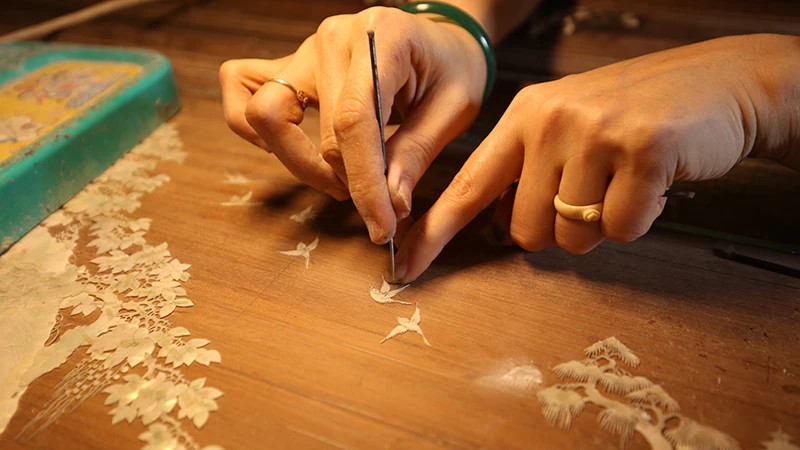In addition to addressing the challenge of increasing income, the policies for developing craft villages have focused on vocational training, skills transmission, and projects to support the development of various crafts.
The development of craft villages in Hanoi has not yet matched their potential and advantages. Most businesses in Hanoi's craft villages operate on a small, spontaneous scale and face numerous challenges.
Support policies to improve the technical infrastructure of craft villages and reduce environmental pollution have been helping these villages become attractive cultural sites and drawing tourists.
Examples of products from these craft villages include Phu Vinh bamboo and rattan products (Chuong My District); Chuong village conical hats (Thanh Oai District); Ha Thai lacquerware, Quat Dong embroidery (Thuong Tin District); Van Phuc silk (Ha Dong District); Bat Trang ceramics (Gia Lam District), and more.
Notably, in Hoai Duc District, 51 out of 53 villages have traditional crafts. Son Dong is one of 12 traditional craft villages recognised by Hanoi and is now an attractive cultural tourism destination for many domestic and international visitors.
However, the development of craft villages in Hanoi has not yet matched their potential and advantages. Most businesses in Hanoi's craft villages operate on a small, spontaneous scale and face numerous challenges. These include a lack of centralised production spaces, a shortage of skilled labour, limited investment in modern technology and machinery to enhance product output and quality, low competitiveness, unstable raw material supplies, limited brand recognition, restricted product consumption, and the decline and loss of some traditional crafts.
Worryingly, the increasing environmental pollution from water, air, and noise, caused by the mixing of daily living activities with household-based production and poor environmental awareness among residents, has negatively impacted people's lives. The preservation of the traditional cultural values of craft village products has not been adequately prioritised, as most production facilities focus on short-term profits and market trends, with little emphasis on enhancing the traditional values of their products.
To support rural industrial facilities and craft village producers in establishing and developing creative design, marketing, and sales activities for OCOP products and craft village products associated with tourism, the Hanoi Municipal Department of Industry and Trade has decided to recognise the model of Creative Design Centres that introduce, promote, and sell OCOP products and craft village products linked to communal-level tourism in 2023.
Notably, to drive sustainable development in craft villages, the city is currently implementing a comprehensive project for developing craft villages in Hanoi for the 2024-2030 period, with a vision for 2050. According to the draft project, Hanoi aims to preserve and enhance the value of craft village artisans, protect and develop traditional crafts and craft villages, promote new trades, develop key craft villages linked to the local potential and strengths, and develop support services while elevating the role of relevant stakeholders.
Along with mechanisms, policies, and projects that support production and enhance competitive value to ensure the sustainable preservation and development of craft villages, local authorities and relevant agencies need to closely align with practical realities, thus continuing to focus on formulating policies tailored to the specific characteristics of craft villages. A pressing and essential issue is guiding and facilitating environmental protection activities.
Furthermore, vocational training should be enhanced through apprenticeship and skill transmission, with policies that encourage artisans and skilled workers to participate in vocational training, especially in traditional and ancient crafts.
It is necessary to review the mechanisms and policies to develop craft villages, improve the environmental landscape of these villages, and contribute to meeting the criteria for building new rural areas, thus, creating green, clean and beautiful craft village environments. We must prioritise the goal of developing and preserving craft villages in conjunction with local tourism development.
















